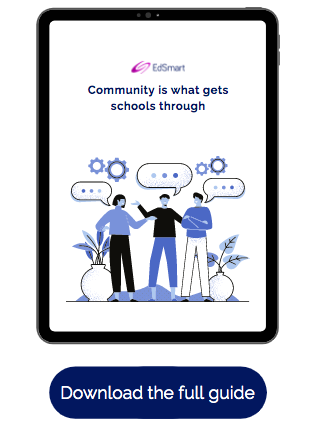With many schools experiencing extended periods off-campus in 2020, the concept of community has taken on a different look.
The year 2020 served up its fair share of challenges for schools, ranging from the rapid establishment of remote learning (in some cases, overnight) to the creation of a sense of normalcy for students, staff and parents amid massive global uncertainty. The response of schools to this panoply of challenges has been nothing less than impressive.
It has been our privilege to talk to many schools and learn the methods they’ve employed to not just survive in 2020 but to thrive. Their tactics have been varied, to say the least, including some revelatory ‘Shape of the Day’ planning that accommodates both the limitations and strengths of online learning and new methods for addressing The Whole Student. However, the one common thread that has emerged from these discussions is that leading schools have all concentrated on building and consolidating their communities.
With many schools experiencing extended periods off-campus in 2020, the concept of community has taken on a different look. Its constituents may have stayed the same, but how these constituents interact has taken on new characteristics to account for physical distancing.
Not surprisingly, the right digital platforms and communications (such as EdSmart) have proven to be indispensable tools during the COVID age. But consolidating a community is about more than just the tools; it’s about knowing how to stoke the fires of your community in a way that goes beyond the immediate, short-term demands of a crisis such as the global pandemic.
By learning how to nurture and develop community, you put your school in a position of strength that should continue well into the future.
In our latest resource, we outline how schools can better understand and improve their engagement and communication with their community, because community is what gets schools through.




